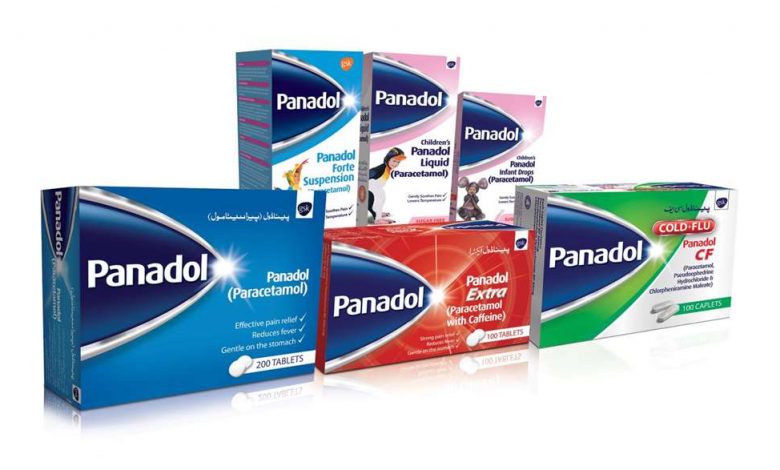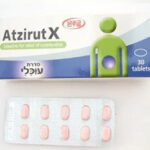Panadol: Uses, Dosage, Side Effects, Interactions, Warnings

What is Panadol?
Panadol is a popular brand of paracetamol commonly used to relieve mild or moderate pain, such as headaches, toothache, or sprains, and to reduce fevers caused by illnesses such as colds and flu. Panadol is often recommended as one of the first treatments for pain, as it’s safe for most people to take and side effects are rare.
Paracetamol, the active ingredient in Panadol was first marketed in the United States in 1950 under the name Triagesic, a combination of paracetamol, aspirin, and caffeine. Reports in 1951 of three users stricken with the blood disease agranulocytosis led to its removal from the marketplace, and it took several years until it became clear that the disease was unconnected. The following year, 1952, paracetamol returned to the US market as a prescription drug. In the United Kingdom, and other countries like Australia, the marketing of paracetamol began around 1956 by Sterling-Winthrop Co. as Panadol, available only by prescription, and promoted as preferable to aspirin since it was safe for children and people with ulcers. In 1963, paracetamol was added to the British Pharmacopoeia and has gained popularity since then as an analgesic agent with few side effects and little interaction with other pharmaceutical agents.
Panadol Vs Tylenol, are they the same?
Yes, the active ingredient in Panadol (paracetamol) is known as acetaminophen in the USA. Acetaminophen more commonly known by the brand name Tylenol relieves mild-to-moderate pain, headache, and fever. Generics and store-specific brands of this medication are also available.
Forms of Panadol
You can buy most types of Panadol from supermarkets or pharmacies. Some types are only available on prescription.
Panadol is available as:
- tablets or caplets
- capsules
- liquid – usually for children
- soluble tablets (tablets that dissolve in water to make a drink)
- suppositories (capsules inserted into the back passage)
In some products, such as cold and flu remedies or certain combination painkillers, Panadol is combined with other ingredients like caffeine.
Who can take Panadol?
Most people can take Panadol safely, including:
- pregnant women
- breastfeeding women
- children over 2 months of age – lower doses are recommended for young children (see How to take Panadol below)
If you’re not sure whether you can take Panadol, check the leaflet that comes with it or ask your pharmacist or doctor for advice.
Always get advice before taking Panadol if you:
- have liver or kidney problems
- have problems with alcohol, such as long-term alcohol misuse.
- are very underweight
- are taking other medications (see Interactions with other medicines below)
- Don’t take Panadol if you’ve had an allergic reaction to it in the past.
How to take Panadol
Make sure you take Panadol as directed on the label or leaflet, or as instructed by a health professional.
How much you can take depends on your age, your weight, the type of Panadol you’re taking, and how strong it is. For example:
- Adults can usually take 1 or 2 tablets (500mg) every 4-6 hours, but shouldn’t take more than 4g (8 x 500mg tablets) in the space of 24 hours.
- Children under 16 need to take a lower dose, depending on their age or weight – check the packet or leaflet, or ask a pharmacist or doctor for advice. For very young children, Panadol liquid is given using a measuring spoon or an oral syringe.
Panadol should start to work within an hour and the effect usually lasts several hours. Don’t take more than the recommended dose if it isn’t relieving your symptoms.
Adults can take ibuprofen at the same time if necessary, but this isn’t usually recommended for children.
Contact your doctor if your symptoms get worse or last more than 3 days despite taking Panadol.
Be careful not to use other medications that contain Panadol as an ingredient (such as some cold and flu remedies) while you’re taking Panadol.
Taking Panadol with other medicines, food, and alcohol
Panadol can react unpredictably with certain other medications. This can affect how well either medicine works and might increase the risk of side effects.
It may not be safe to take Panadol at the same time as:
- other products containing paracetamol – including combination products where paracetamol or acetaminophen is one of the ingredients
- carbamazepine – used to treat epilepsy and some types of pain
- colestyramine – used to reduce itchiness caused by primary biliary cirrhosis (a type of liver disease)
- imatinib and busulfan – used to treat certain types of cancer
- ketoconazole – a type of antifungal medicine
- lixisenatide – used to treat type 2 diabetes
- metoclopramide – used to relieve nausea and vomiting
- phenobarbital, phenytoin, and primidone – used to control seizures
- warfarin – used to prevent blood clots
Check the leaflet that comes with your medicine to see if it can be taken with Panadol. Ask a pharmacist or doctor if you’re not sure.
There are no known problems caused by taking Panadol with any specific foods or by drinking moderate amounts of alcohol while taking Panadol.
What happens if I miss a dose?
Since Panadol is taken as needed, you may not be on a dosing schedule. If you are taking the medication regularly, take the missed dose as soon as you remember. Skip the missed dose if it is almost time for your next scheduled dose. Do not take extra medicine to make up for the missed dose.
What happens if I overdose?
Seek emergency medical attention or call the Poison Help line at 1-800-222-1222. An overdose of Panadol can be fatal.
The first signs of a Panadol overdose include loss of appetite, nausea, vomiting, stomach pain, sweating, and confusion or weakness. Later symptoms may include pain in your upper stomach, dark urine, and yellowing of your skin or the whites of your eyes.
Side effects of Panadol
Side effects from Panadol are rare but can include:
- an allergic reaction, which can cause a rash and swelling
- flushing, low blood pressure, and a fast heartbeat – this can sometimes happen when Panadol is given in hospital into a vein in your arm
- blood disorders, such as thrombocytopenia (low number of platelet cells) and leukopenia (low number of white blood cells)
- liver and kidney damage, if you take too much (overdose) – this can be fatal in severe cases
Speak to a pharmacist or doctor if you develop any troublesome side effects that you think could be caused by Panadol.
Is it ok to take Panadol before COVID vaccine?
The CDC recommends that you should avoid taking an over-the-counter medicine such as Panadol before vaccination for the purpose of trying to prevent vaccine-related side effects. It is not known how these medications might affect how well the vaccine works.





